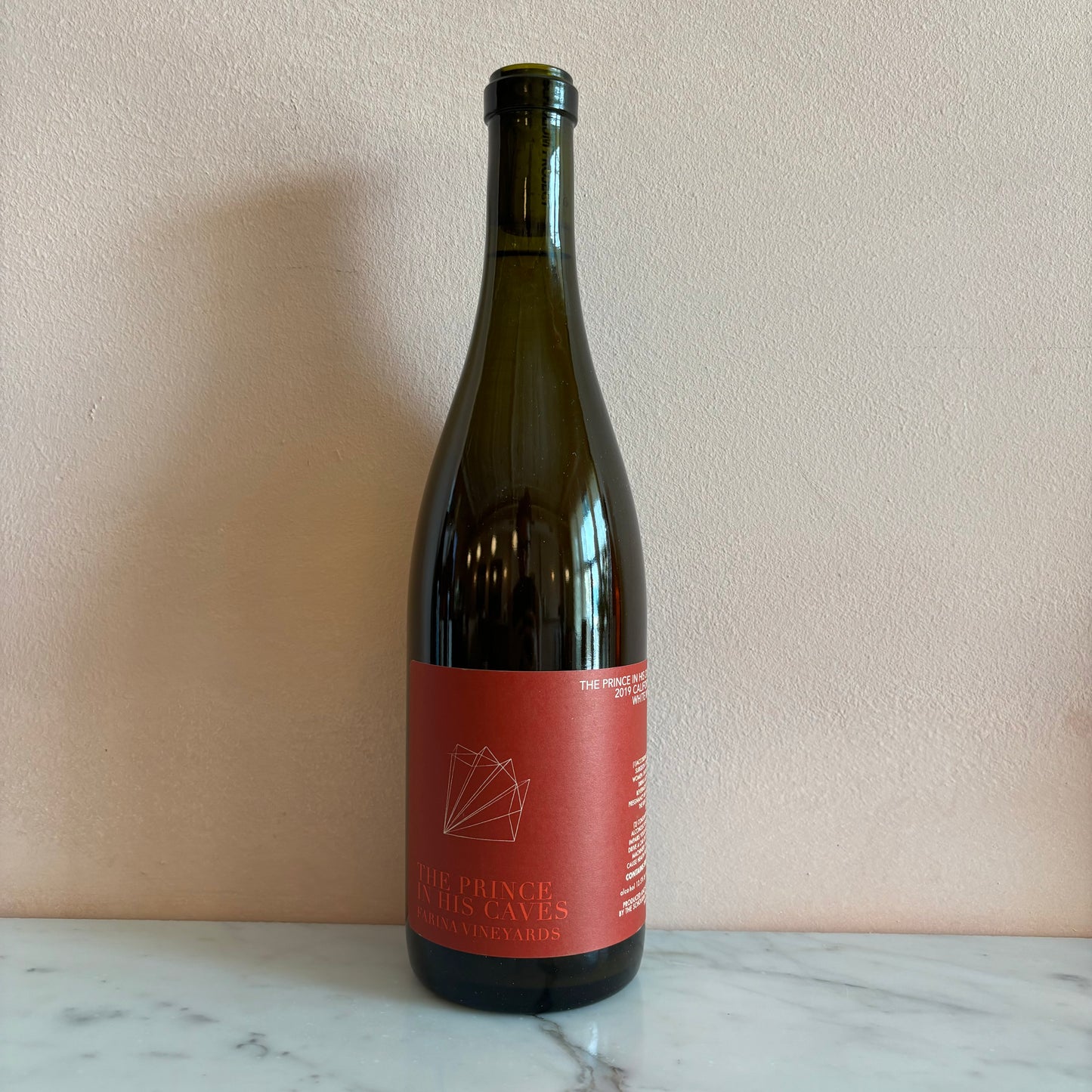Scholium Project
Scholium Project "The Prince in His Caves" Sauvignon Blanc, Sonoma County, California 2019
Scholium Project "The Prince in His Caves" Sauvignon Blanc, Sonoma County, California 2019
Couldn't load pickup availability
FROM SCHOLIUM PROJECT:
THE WINE: 100% skin-fermented Sauvignon Blanc from the Farina vineyard on an east-facing hillside on Sonoma Mountain. Beginning in 2018, we included fruit from the very rocky top of the hillside. This fruit is more intense, severe, tannic, and perfumed than the somewhat softer fruit from the bottom of the hill that had previously gone into the Prince alone. The wine was stomped by foot without any destemming, fermented in contact with the skins and stems for about 14 days, drained and pressed and put down to neutral Kongsgaard barrels without SO2. The wine then aged absolutely undisturbed in these barrels for 20 months. This is our best vintage of the Prince ever. It is also likely to be our last. We did not make the wine in 2020 and so almost certainly lost access to the vineyard. We will not know for sure until harvest is near.
THE PRODUCER: Winemaking in a 97 year-old corrugated steel building on the banks of the Los Angeles River. The Scholium Project has never had a permanent home. We now have one mind: and one somehow appropriate to our strange and unconventional project. We do not image a functional structure in the country, suited to storing barrels for maturation and equipment during the off-season. We imagine a home in the heart of the city, where will make bring fruit and make wine for all to see—but not just a facility for crushing grapes, but the home for a culture, where we can host lectures, tastings, conferences, cook outs.
In some sense, our mission is distinctly urban, not rural or pastoral: it is about the culture of winemaking. For this reason, the heart of a city is the perfect home. The lot is 0.43 acres, in the middle of an industrial area in the midst of rapid redevelopment. The lot nearly abuts the Los Angeles River; it is cut off from the concrete banks of the river by just a few feet of railroad track. The parcel is a sub-division of the Wilhardt tract, named for the German immigrant Louis Wilhardt who purchased several acres north and east of the downtown around 1830, where he planted grapes and built a winery. It is absolutely remarkable and not well known: Los Angeles was the center of grape growing in the United States until about 1900, and one of the most important grape growing regions in the world. German and French immigrants came here beginning in the 1830s to grow grapes and make wine, pulled in by the warm, dry climate, the irrigation offered by the river, and the gravelly alluvial soils on its banks. By the the 1880s, there were hundreds of acres under vine, and new Americans from all over the world were making (and exporting) millions of gallons of wine in what is now the city of Los Angeles. Wilhart built a winery on the corner of the tract, only a few hundred feet from where we want to re-establish winemaking on the edge of the river.


